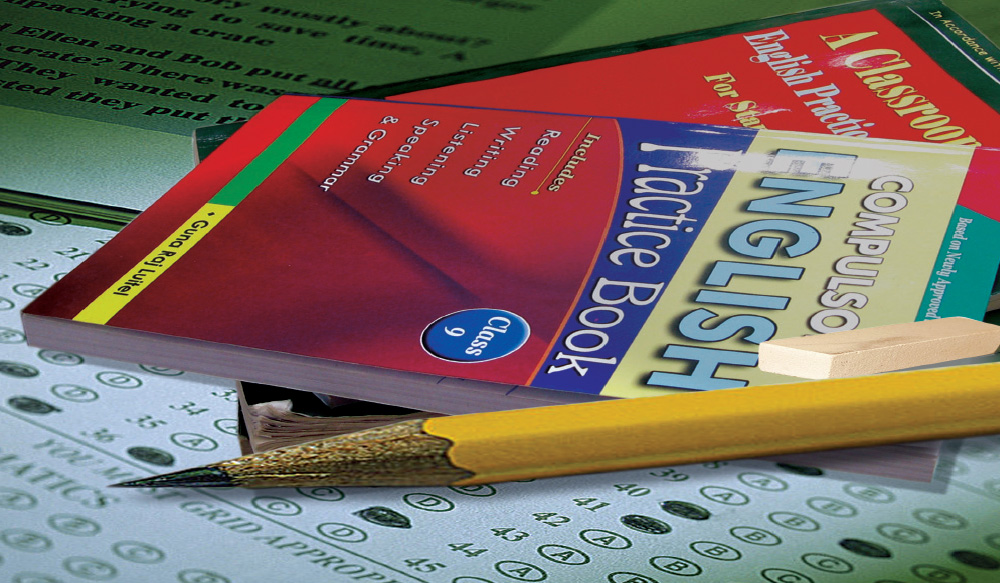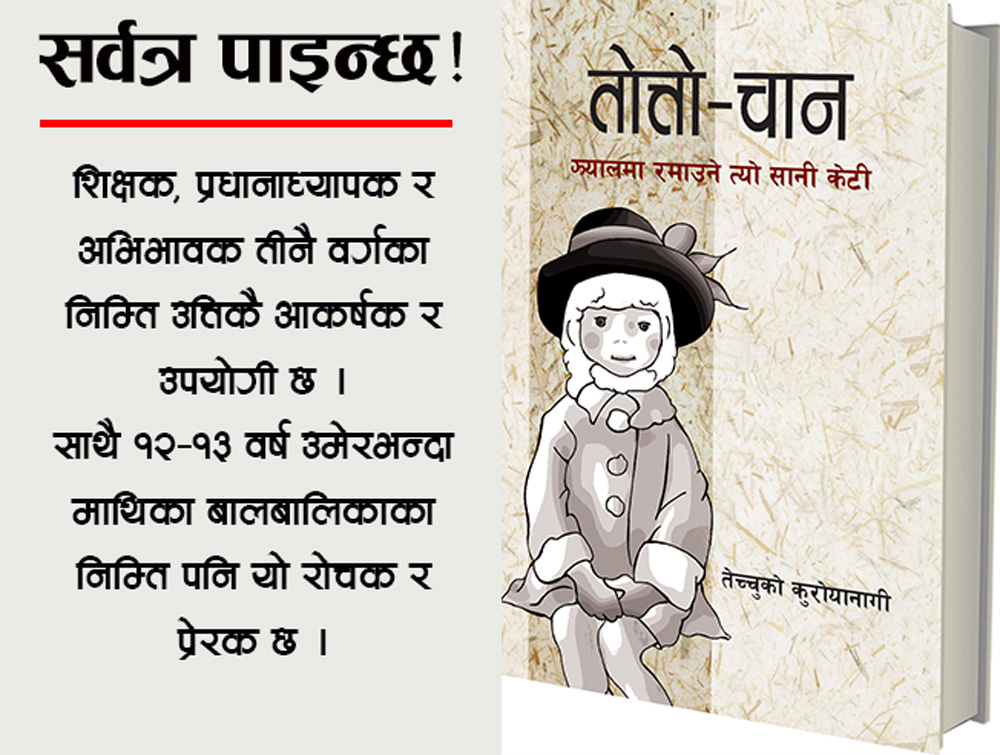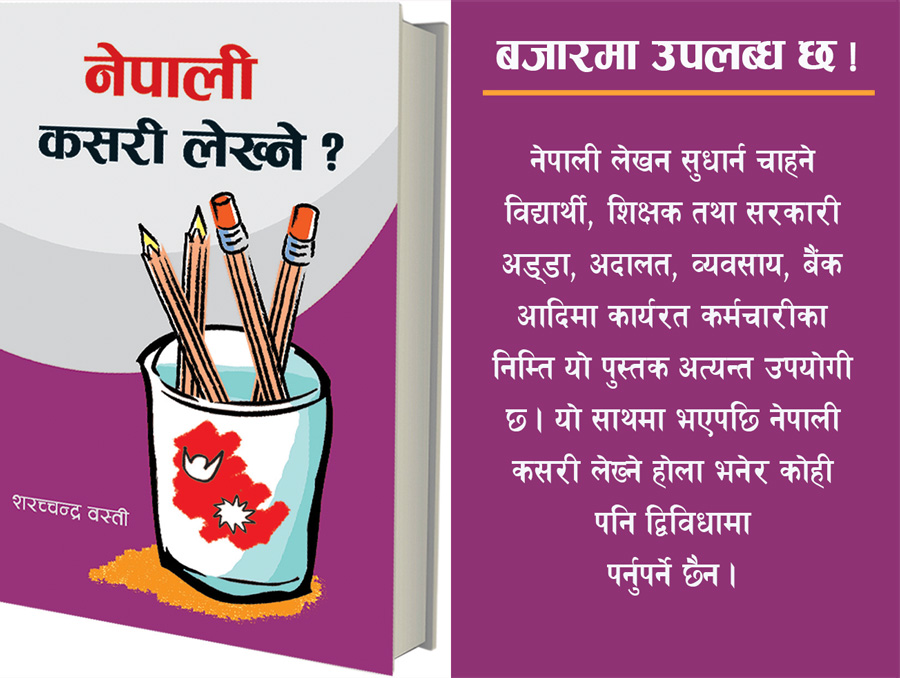Adapting textbooks for ELT

We English language teachers should keep in mind that learning a language is not like learning another subject such as history, mathematics or biology. A language should never be taken as a subject, it is a medium.
We start with introducing the concept of supplementing and adapting textbooks for English Language Teaching (ELT). This is done by making use of materials which make the students interested and motivated. We discuss adapting textbook materials to suit to the aptitude and learning style of students.
Whenever we visit schools as trainers and resource persons, we take the opportunity to ask students what teaching-learning aids teachers use. We ask a simple question: “What does your English teacher carry to the classroom?” The responses vary. Some students say that their teachers bring textbooks, worksheets, newspapers, pictures, audio player, posters, etc. Others say that their teachers just carry textbooks. Some complain that their teachers come with nothing more than chalk and duster. Others are evidently so unprepared, they borrow textbook from the students.
We English language teachers should keep in mind that learning a language is not like learning another subject such as history, mathematics or biology. A language should never be taken as a subject, it is a medium.
Through English language classes, we are preparing our students to communicate in real-life situations, where they will have to handle all types of communication independently, with accuracy and fluency. In today’s world of communication, our students will surely lag behind in every field if they cannot convey the messages they want to. Exposure to various English language usages will enhance the proficiency of the students, and this requires teachers to be able to use different teaching-learning materials in the classroom. A variety of teaching-learning materials in the classroom is an ideal source for developing the students’ language standard. These ELT materials can be in the form of textbooks, workbooks, cassettes or DVDs, newspapers, in addition to the blackboard or white board where words are written. In short, anything that presents, informs or deals with language learning may be termed an ELT material.
Even as we take the assistance of ELT materials, English teachers must not forget that there is diversity in the ways that students prefer to learn a language. Some students have a preference for listening in learning a language (auditory learners), some for seeing it written down (visual learners), some for learning it in discrete bits (analytical learners), some for expressing it in large chunks (holistic or experiential learners), and others prefer to do something physical while experiencing the language (kinesthetic learners).
Remember that teaching young learners is very different from teaching adults. Young learners tend to change their moodsevery other minute and have short attention spans. On the other hand, they show a greater motivation than adults to do things that appeal to them. They need a lot of encouragement for learning, and they imbibe more if the environment is favourable, fun and child- friendly. Youngsters are better at learning if all their senses are used and exploited.
Though children of the same age group are found in a class, it is a challenge for the teacher because the pupils can vary greatly in terms of maturity, intelligence and interest. Some of this also has to do with cultural and familial background. Teachers, particularly in the primary grades, must therefore work extra hard to keep their pupils motivated and working in developing their English language. For all these reasons, the thoughtful teachers will pay attention to ‘material adaptation’ to suit the situation in which they are working.
Since it is almost impossible to cater to the varied interest of a large number of multi-level students, the teacher needs to be thoughtful, skilful and innovative in selecting activities which would cater to the needs of the students present in the class. Carefully adapted materials will work wonders in this regard – while adapting materials a teacher makes changes in the materials in order to improve them or to make them suitable for a particular type of teaching-learning process. Therefore, the important skill of materials adaptation will help the teachers to bring needed and adequate change to materials in order to improve them or to make them suitable for a particular type of learning environment, which will vary from place to place and classroom to classroom.
As an easy way out, most teachers solely depend on the textbooks prescribed by the school as a teaching material. In doing so, and only relying only on the textbook, the teacher is compromising with one of the most important of pedagogic principles, the encouragement of creativity. Enhancing and inculcating the quality of creativity is one of the main objectives of teaching. Students should be provided with an opportunity to think freely so that their minds will be filled with curiosity and boundless imagination. Rigid use of textbooks can deviate us from the developing creativity, by forcing stereotyped learning and teaching strategies on the students. By following certain books blindly without any kind of adaptation, we do injustice to the learners as well as to our pious profession of teaching. This is because textbook materials are not always appropriate: they may be too difficult or too easy for the students to comprehend, and using them alone may not be adequate to capture attention.
By rigidly using textbooks without any kind of adaptation, we are trying to impose the ideas given by others as they are written by someone else. To make the printed material relevant, it is often necessary to do more than merely read from the page. Naturally, the absentee experts (the authors of textbooks) are neither aware of the age, level, interest nor the capacity of our students. We cannot expect the book writers and experts to solve our typical and local problems that we face day to day. We must also keep in mind that the textbook writers may have themselves taught in very different circumstances and settings. Therefore, English language teachers should have the skills to develop their own ELT materials as the text in the course books is usually pre-selected and un-adapted. In fact, one could go as far as to say that textbooks can even emerge as an obstacle between the teacher and the student, preventing the two from responding and reacting to each other in the process of teaching and learning. Reliance on textbook alone can take the excitement and motivation out of education, and the students become passive and un-creative. When the student remain unexcited, the teacher himself/herself loses motivation.
Lessons based on thoughtfully and properly prepared ELT materials can be very beneficial for young learners. This is because the teacher uses the materials for exploiting all the four skills in the pupil, namely listening, speaking, reading and writing. Traditionally, the emphasis has been primarily on the ‘teaching’ side of language learning rather than on the ‘learning’ side. It was assumed that if teachers do their job of teaching well, the students would certainly learn and retain the language well. But this concept has undergone transformation; it has become clear that if students are not learning or not motivated to learn, it may not matter much how well the teacher is teaching. Therefore, now there is a shift in focus of education from teaching to learning, with the teacher emerging as a ‘facilitator’.
As modern day teachers, we should be able to break the monotony of the conventional style of teaching only from the textbooks. We should, as far as possible, try to assist our students to be participants themselves in the learning process, where our role is that of the guide or facilitator. We should make our pupils realise that good language learning is possible only through the mutual co-operation between them and the teacher. Of course, the learners must participate in the activities willingly, actively and spontaneously, otherwise the teaching-learning process will never meet its objective.
While using the ELT materials, the lessons are planned in such a way that it integrates more than one skill through lots of interactions. Using the materials is intended to involve the learners so that they learn by doing. They will be self-motivated as they are the participants themselves. Some lessons in these textbooks may not be according to the need and the interest of your children. So, a dynamic and innovative teacher will prepare her/his own lesson using ELT materials as per the level, interest and need of the students. The teaching-learning will become more fruitful, and your level of satisfaction as a teacher will only be matched by the students’ excitement at the ease with which they are learning English.
While preparing ELT materials, it is always wise to use local materials which are easily available. These materials should be cost effective as well as durable so you do not have to make the materials over and again. Materials should also be chosen based on what students in general are likely to find interesting and motivating. Another important aspect of choosing the materials is that these should be slightly higher in level of difficulty than the present level of English proficiency. This will help challenge the students, and they will have a sense of achievement if they can solve the problems themselves. The materials should contain authentic texts, realistic situations and activities that will help the learners to develop communicative skills and strategies.
If we include pictures, posters, cut-outs, figures, visual puzzles, logic problems riddles, sequencing activities, tongue twisters in our lessons, then activities will spark the children’s imaginations, sharpen their thinking skills and foster a love of learning. In the child-centered classes, the children will get ample opportunities to explore their hidden talents themselves in groups or individually. The will be encouraged to be creative, and motivated to participate in various activities based on the lesson. Any materials that the teacher chooses should be able to create contexts in which the language is useful or meaningful.
The materials that we as teachers select should help the learners to experience language rather than study it; they should be able to bring the outside world into classroom. These may range from non linguistic items such as simple visuals or realia to authentic texts including newspaper articles, audio recordings of conversations or videos of recent TV programmes. Exposing students to these authentic texts or materials of the outside world has an important function in providing realistic input, establishing a dynamic and meaningful context for learning and increasing student motivation.
This Article is Co-ordinated by NELTA



